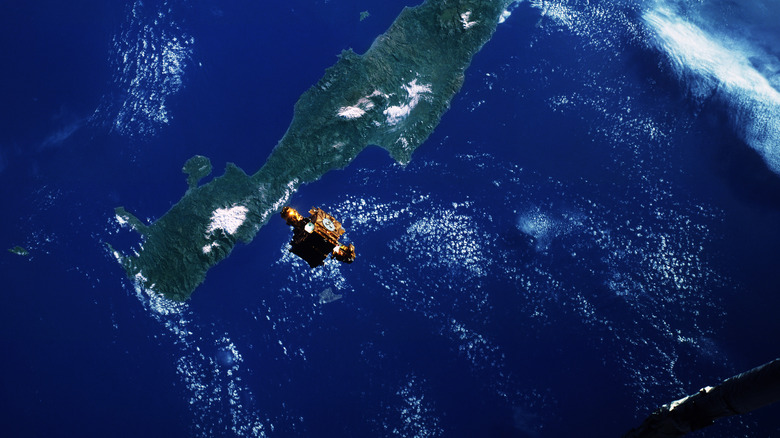Has NASA Stopped Exploring The Ocean? The Myth Debunked
Conspiracy theories have swirled around NASA for as long as the agency has been in existence, including suggestions that the moon landing was faked, the Earth is flat, and that aliens are vacationing at Area 51. Now, a newer and more novel X-File has emerged: the claim that NASA stopped exploring the ocean in the late '70s. A short YouTube video with ominous music over shots of fish claims that NASA gave up on the ocean in mid-1978, presumably because it began working on "getting us off the planet" instead. The conspiracy video leaves viewers with the haunting question: "What did they discover down there?"
Putting aside that this sounds like the plot of James Cameron's movie "The Abyss," the video continues to pop up on social media and make the rounds. Are you going to take that, NASA? The issue with the claim is that the agency's ocean research has been ongoing since the start, and not just because of those cool deep sea fish with light bulbs on their heads. The continuing research is not simply to study the relationship between the ocean and Earth, but to use the ocean as a giant testing ground for potential exploration of other planets.
NASA has never stopped exploring the ocean
NASA oceanic studies abound. The NASA Ocean Physics program uses satellites and sub-orbital data to study the ocean's role in our climate, accounting for sea level rise, ocean dynamics, and how the ocean ultimately interacts with our planet. The SUBSEA project, which requires holding your breath to spell out — Systematic Underwater Biogeochemical Science and Exploration Analog — uses robots underwater to simulate exploring planets with similar conditions. It also researches areas like the warm springs flowing from an underwater volcano off Hawaii Island to study "conditions scientists believe exist on certain moons in the outer solar system, which may have the right combination of factors to support life."
And when it's not exploring our oceans, the NASA Ocean Worlds Exploration Program (OWEP) studies ocean worlds in the outer solar system to assess their viability for hosting simple extraterrestrial life, similar to the previously mentioned weird ones we find on Earth at the very bottom of the ocean. It's all a tad more involved than making a YouTube video with captions and a robot voice. But ironically, something did end concerning the ocean and NASA in 1978. That's when it launched Seasat, its first dedicated ocean satellite, which lasted in Earth's orbit for about 105 days before short-circuiting. So that did end momentarily, but there are now several other satellites doing the same thing right above us. Nice try, YouTube.

